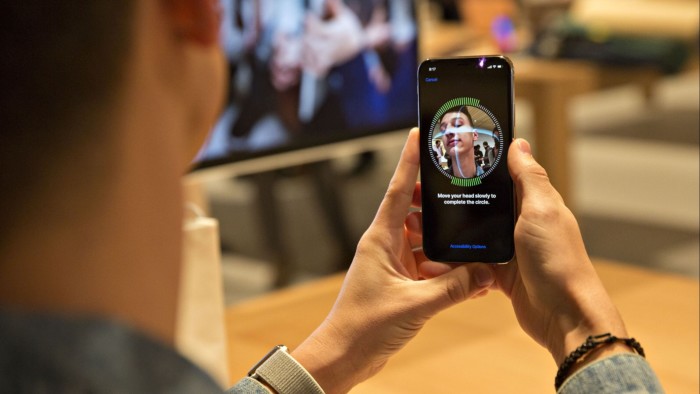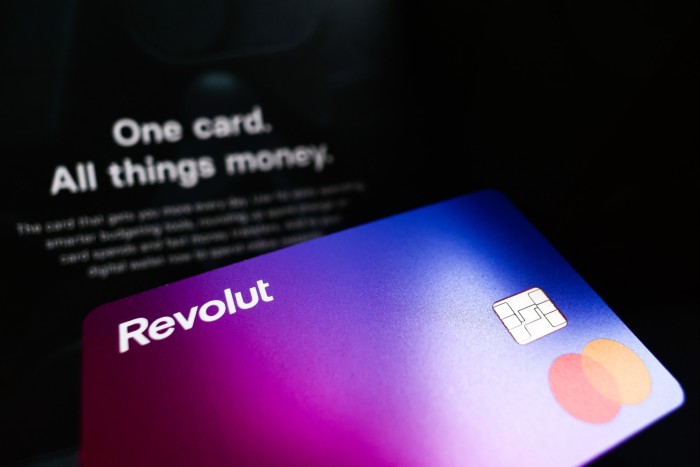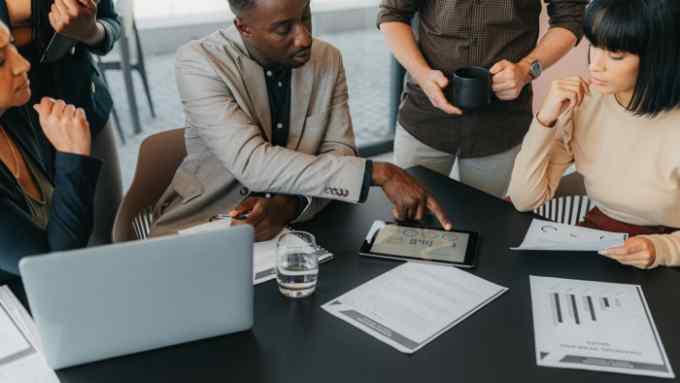Why is technology best for checking bank customer identities?

Roula Khalaf, Editor of the FT, selects her favourite stories in this weekly newsletter.
As much as many of us value human interaction, there are some tasks that artificial intelligence performs much better than any person. Verifying customer identity is one of them, according to online finance specialists.
As anyone who has ever opened a bank account online or in the flesh knows, a document with your photo will almost universally be required as proof of identity.
In a bank branch, a clerk will look at you and your passport or driving licence, for example, to see if they match. Or, if you apply online, you’ll be asked to take a picture of the identity document and your face, which will then be read by a machine. And the technology will probably be more accurate in analysing the images than the bank employee.
Why are machines better at verifying identity?
“Humans are not particularly great at recognising humans,” explains Yuelin Li, chief product officer at UK-based digital identity verification provider Onfido She points to studies showing that machines are better than ordinary people at recognising faces and just as good as “professional facial examiners”, who are more likely to be employed in law enforcement than by banks.
There are many reasons for machines’ superiority in facial recognition. Li says humans can struggle with reconciling how someone looks currently with ID card photos that could be years old, and matching a 3D image of a real person to a 2D one. Machines are more precise because they can use measurements of, for example, the distance between facial features and the size of marks to figure out if the person and the photo match.
Machines are also much more experienced than even the most skilled bank clerk. Li says Onfido uses a machine-learning model, which improves the accuracy of the technology powering its system over time. It can also, at the request of clients, check whether someone has previously tried to link the same face to a different name.
Onfido also offers verification using other documents, such as utility bills. It looks at the document to verify an address, checks if there is a valid issue date, and whether the template looks reasonable. Fundamentally, though, the advice the company gives to financial institutions is that the use of records such as utility bills is not the most secure way to verify someone’s identity.
How does online verification improve security?
Li says online customer onboarding — taking a client on to a banking or investment platform and setting them up — is more secure than more traditional approaches because it is now typically done entirely within a bank or payment provider app. “One of the things people are very nervous about is [using] things like call centres,” she says. “A lot of attacks that are going on now — a phishing attack or a text message or something — they [criminals] get you because you’re coming out of the app.”
That helps explain why online verification has become mainstream in recent years, with Li noting that the “vast majority” of onboarding is now online, among the traditional and new institutions that Onfido works with in the UK.
Revolut, a UK fintech that doesn’t have physical branches, has more than 30mn online customers worldwide. Its head of financial crime and fraud, Aaron Elliott-Gross, says the company uses a combination of internal models and systems alongside services from vendors to deal with the “constant threat” of, for example, AI-generated images and deep fakes being passed off as ‘selfie’ videos of real people.

“They [the vendors] check to make sure the selfie is live, they check to make sure there’s motion, and the vendors are very good at this. We provide an additional layer [of checks] on top of this because we see so many onboards that we think we have something to add . . . to see if there’s anything we can detect that’s unusual.”
What other digital checks can be made?
Elliott-Gross stresses that facial recognition and verifying documents such as bills are the “basic building blocks” but that much more sophisticated checks happen behind the scenes. “It’s really what you do beyond that differentiates you . . . It’s very obvious [to the potential new customer] that we’re verifying documents, it’s very obvious that we’re verifying data,” he says. “We run a lot of modelling on top of that.
“[We] say, let’s not just look at the data a customer gave us, let’s look at other signals we have about that customer — say [what the] IP address on their mobile device looks like, the history we have on their phone number or email address [which Revolut can get from data providers] to figure out whether that customer is a genuine onboard or fraudulent.”
Revolut is also using its identity tools for more than onboarding. For example, it can verify that people still have control of their accounts if they switch phones or if they are make an unusually large payment. This ensures that, if a phone is stolen, the thief won’t then be able to execute a large transaction from the victim’s account.
The fintech is also “very interested” in the evolving field of behavioural biometrics, which involves profiling, for example, the angle at which a user typically holds a device, and the speed at which they press its buttons or type. All these idiosyncrasies can help to authenticate identity once the user has been onboarded.

Comments